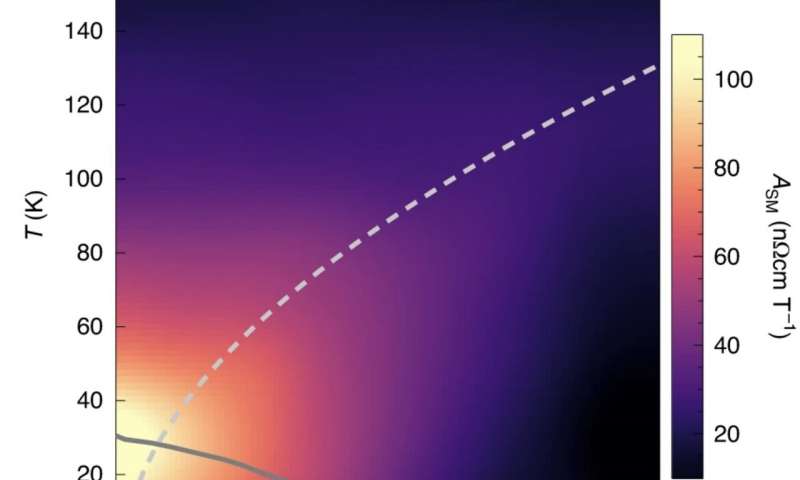HOME
The Hall effect links superconductivity and quantum criticality in a strange metal

The amplitude of the strange metal contribution in the Hall effect as a function of composition x and temperature T, estimated from the field dependence of R_H. The white dotted line is a guide to the eye, emphasizing the boundary of the region where the strange metal R_H is independent of x. Above the line the strange metal Hall depends only on temperature and independent of composition x, below the line these contributions persist to zero temperature, suggesting a direct connection to the superconducting ground state. Credit: Nature Physics (2020). Hayes et al.
Over the past few decades, researchers have identified a number of superconducting materials with atypical properties, known as unconventional superconductors. Many of these superconductors share the same anomalous charge transport properties and are thus collectively characterized as "strange metals."
Researchers at the University of California, Berkeley (UC Berkeley) and Los Alamos National Laboratory have been investigating the anomalous transport properties of strange metals, along with several other teams worldwide. In a recent paper published in Nature Physics, they showed that in one of these materials, BaFe2(As1−xPx)2, superconductivity and quantum criticality are linked by what is known as the Hall effect.
For decades, physicists have been unable to fully understand T-linear resistivity, a signature of strange metals that has often been observed in many unconventional superconductors. In 2016, the team at UC Berkeley and Los Alamos National Lab observed an unusual scaling relationship between the magnetic field and temperature in superconductor BaFe2(As1−xPx)2.
News Source